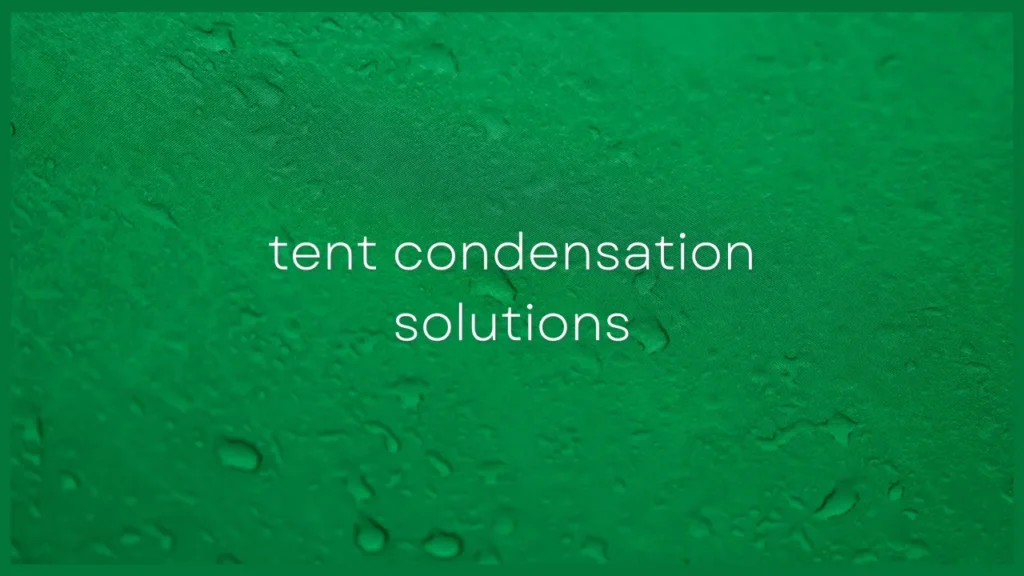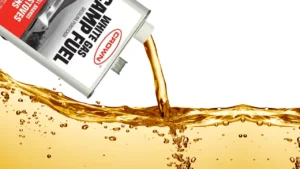One of my least favorite parts of camping is waking up to a tent soaked in condensation. It drips down on your, wets all your gear and just isn't pleasant to wake up to. It can even lead to mold growth if you don't deal with it. It’s something you either need to learn to live with or figure out how to manage.
Each person in your tent will exhale and sweat out about 1 liter of water PER NIGHT and a lot of that water can end up on the inside of your tent if you don't learn how to get rid of it.
So what exactly are the most effective options to prevent condensation from forming in a tent?
To manage condensation inside your tent, you need to increase ventilation and reduce humidity as much as possible. The best ways to do so are to:
- Use a double-wall tent if realistic.
- Choose a high-quality tent made from breathable materials.
- Maximize airflow through your tent.
- Use a tent dehumidifier.
- Avoid storing wet clothes inside your tent.
- Avoid cooking or boiling water in your tent.
- Set up camp under trees.
- Avoid setting up camp near waterways.
- Avoid setting up camp in low points in the landscape.
- Use a groundsheet under your tent.
- Maintain your tent by keeping all seams tightly sealed.
- Keep a hand towel nearby to wipe away any condensation that still occurs.
What Causes Condensation Inside Your Tent?
Before we dive any deeper, it’s important to better understand why condensation happens in tents in the first place.
In general, condensation happens when warm humid air comes in contact with a cool surface, causing some of the water vapor in the air to convert back to liquid water.
In a tent more specifically, it happens because the air outside the tent cools down overnight (and the tent’s walls as a result), while the air inside the tent is warmed by our body heat and made more humid through our breathing and a few other factors, like wet clothing and gear drying inside.
This moist humid air then cools when it comes in contact with the tent walls and the moisture condenses into water droplets which stick to the inside walls of your tent.
So let’s take a closer look at the 12 best ways to prevent (or at least limit) condensation — by increasing ventilation, setting up camp in an optimal location, and minimizing sources of moisture in our tents.
1. Choose A Double-Wall Tent (If Possible)
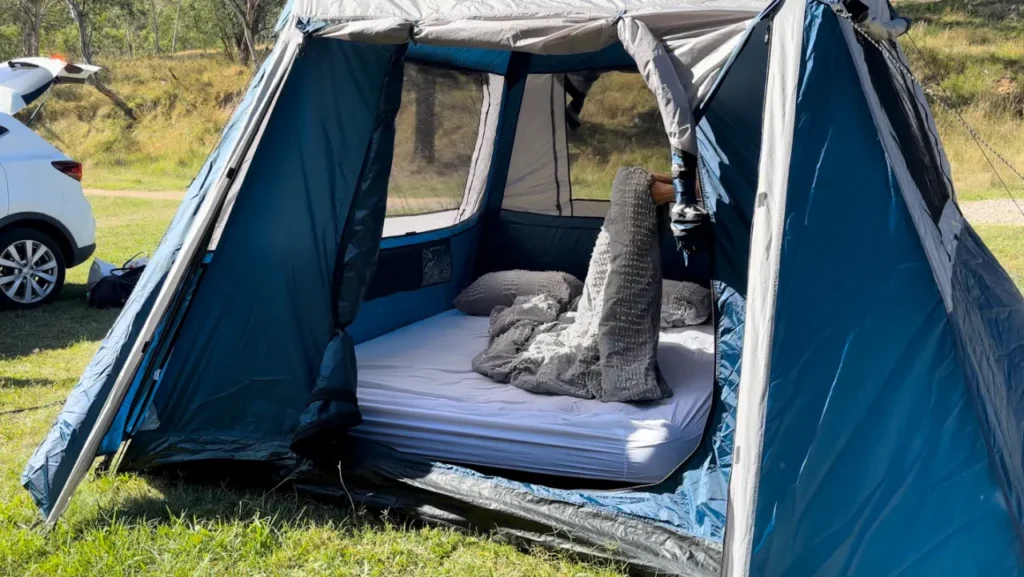
Double-wall tents are made up of a super breathable inner wall (essentially just bug netting) with a water-proof rainfly suspended above.
Because they’re often much better ventilated than single-wall tents, condensation is less likely to develop — because the warm humid air in the tent is being replaced by cooler drier air from outside.
And any condensation that still happens will cling to the inside of your rainfly instead of the interior walls, making it much less of a nuisance to deal with.
The condensation will then evaporate throughout the warmer days and you likely won't even notice it.
But the bad news is, double-wall tents aren’t always a realistic option. If you’re backpacking and weight is a concern, you’re probably better off using an ultralight single-wall tent and managing condensation in some other way.
2. Choose A High-Quality Tent
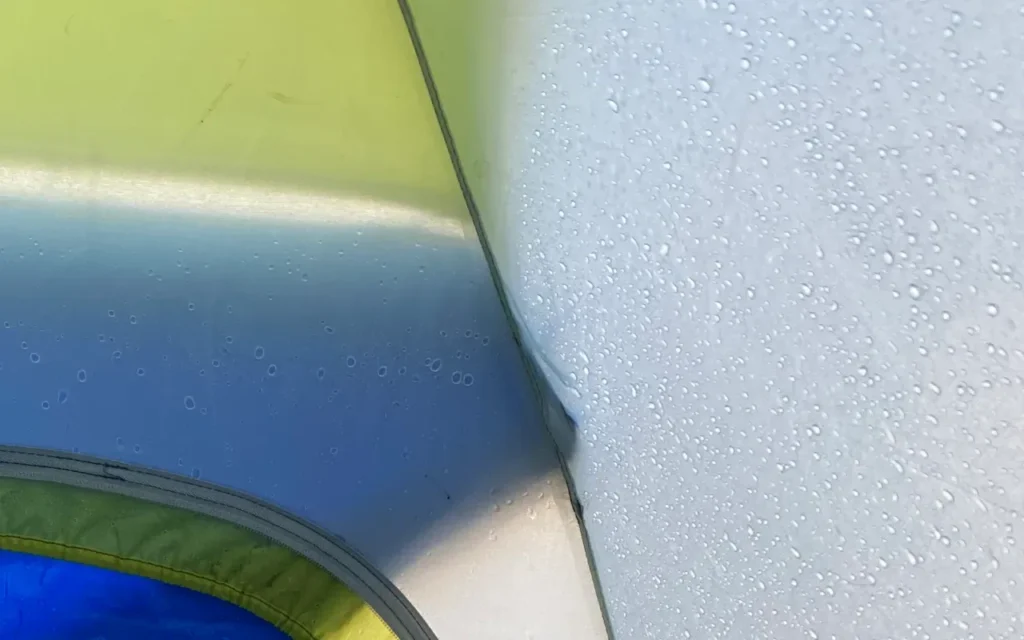
The quality of your tent also has a lot to do with the amount of condensation that’ll form inside overnight — simply because better tents are made with more-breathable materials and better designed airflow systems.
Choose a tent made by a reputable manufacturer and skim over some reviews to see if others have had any issues with condensation.
If you settle on a cheap tent with poor ventilation, you’re already fighting an uphill battle.
3. Increase Airflow Through Your Tent

Increasing the ventilation of your tent will keep the heat and humidity inside at manageable levels and help limit condensation.
To maximize airflow through your tent:
- Leave your tent flap open, unless bugs are a big issue where you’re camping.
- Pitch your tent so the entry faces the oncoming breeze.
- Roll up any sections of your rainfly that aren’t actively protecting you from sunlight or rainfall.
- Stake your tent and rainfly taut, to maximize the insulating layer between.
- Allow a cross breeze to travel through your tent by opening vents, windows on opposite sides.
- Use a small battery powered fan to encourage air to circulate through your tent.
There is a tradeoff between increased airflow and warmth. If you're camping in colder areas sometimes it's difficult to maximize airflow as you'll get extremely cold.
When this happens open whatever flies you can and manage the airflow as warmth as best you can.
4. Use A Tent Dehumidifier
Dehumidifiers are an easy way to reduce humidity in your tent, but can’t be relied on as the only method of preventing condensation.
When it comes to tent dehumidifiers, you have two main options — absorptive dehumidifiers (usually made of silica gel or charcoal briquettes) or portable electric dehumidifiers (if your campsite has a generator).
The former are less effective, but much lighter and more portable. The latter will remove more moisture from the air, but can be a bit loud and aren’t very realistic if you’re backpacking.
Check out my deep dive on the best tent dehumidifiers to learn more or check out my guide on making an easy DIY tent dehumidifier if you’d like to save a few bucks.
5. Don’t Store Wet Clothes Or Gear In Your Tent
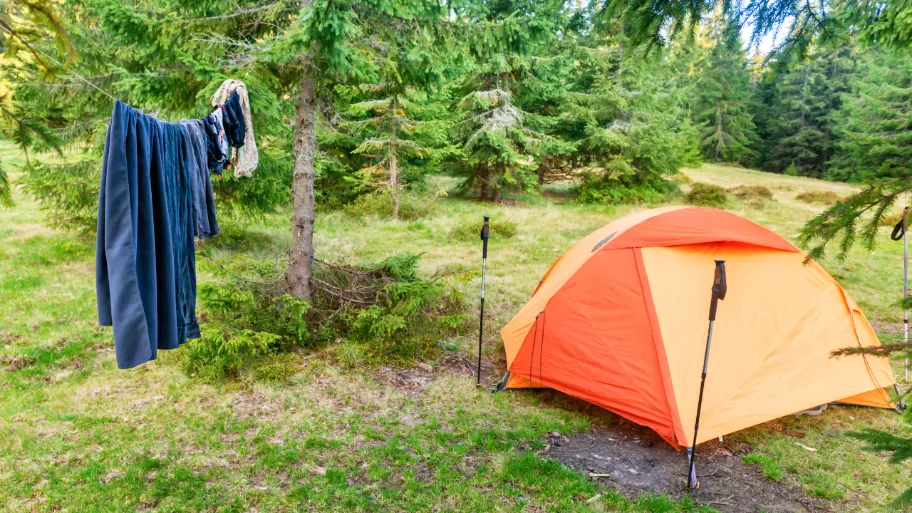
If you keep wet gear or clothing in your tent, they’ll only increase the humidity level inside as they dry.
Either let them fully dry before bringing them inside, keep them outside, or stick them in a dry bag so the moisture isn’t able to evaporate and potentially turn into condensation.
6. Don’t Cook Or Boil Water In Your Tent
Cooking or boiling water in your tent will also create unnecessary moisture as steam escapes.
I know it sucks to cook outside if it’s wet or bitterly cold, but cooking in your tent is a surefire way to wake up to a tent soaked in condensate.
7. Set Up Camp (Safely) Under Trees
Where you set up your tent can also have a pretty big impact on the amount of condensation you wake up to.
Setting up camp under the treeline will create more warmth at night, thanks to radiative heat creating what's essentially a warmer microclimate beneath. (It also happens to make your tent safer from lightning)
In turn, your tent’s walls will stay a bit warmer and less condensation is likely.
As always, be sure to check the area above your tent for dead or hanging branches. A little condensation is a better outcome than a branch crashing through your tent as you sleep. These trees are called “widow makers” for a reason.
8. Avoid Setting Up Camp Near Streams, Lakes, And Other Waterways
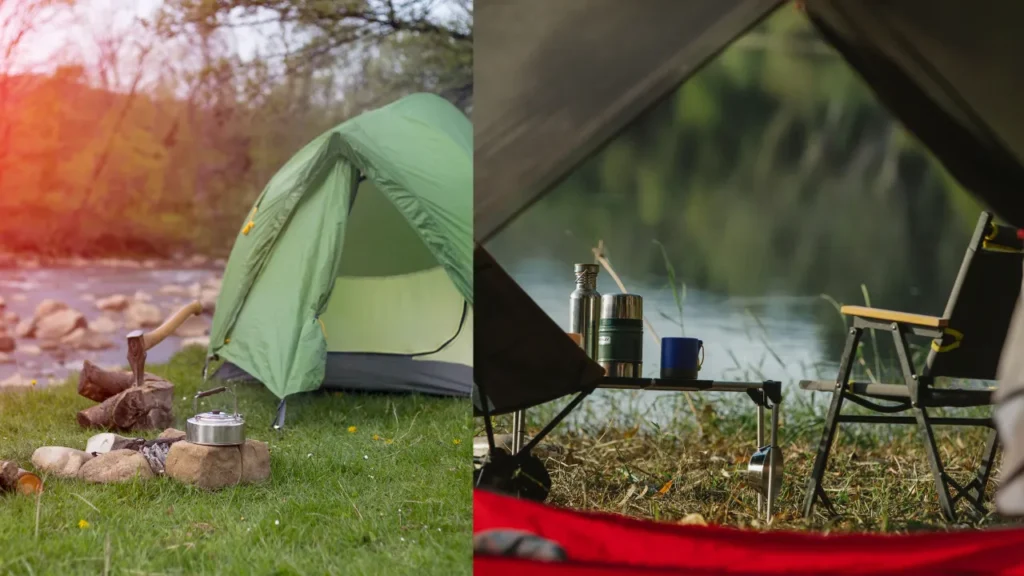
While its tempting and beautiful to camp right next to the local stream – and nothing beats waking up to a water view – it will increase your condensation substantially.
The increased humidity in the air around streams, marshes, lakes, and other waterways will lead to significantly more condensation in your tent.
Do your best to put some distance between your campsite and water sources whenever possible.
9. Don’t Set Up Camp In Valleys Or Other Low Points
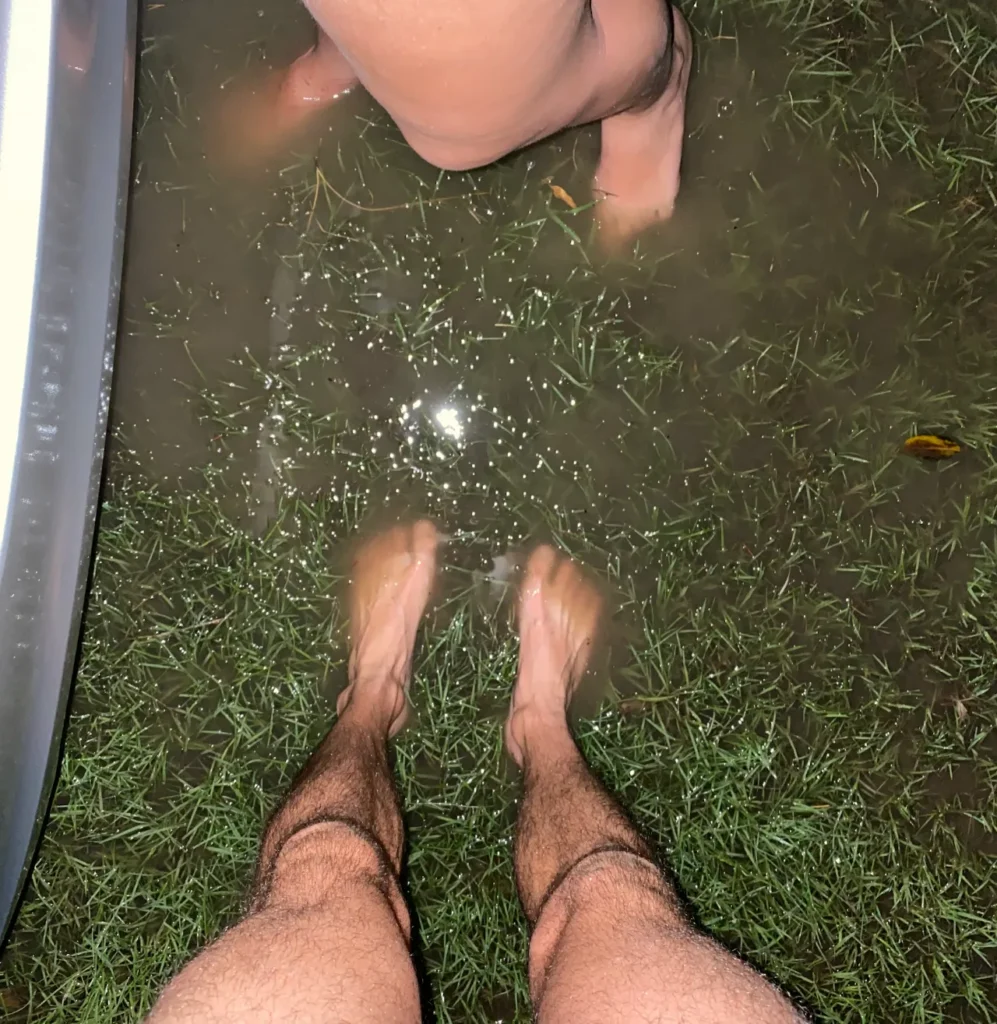
Avoid setting up camp in valleys or other low points in the landscape where cold air is more likely to settle at night and rain is likely to pool.
Remember, the colder the air outside your tent, the colder the walls of your tent become and the more condensation is likely.
10. Use A Groundsheet
A groundsheet is essentially a lightweight waterproof tarp meant to prevent moisture from seeping from the ground through the floor of your tent.
While most tents are waterproof enough that it won’t make a huge difference, the extra layer of protection can only help — especially if it’s been raining or the ground around your campsite is particularly damp.
11. Maintain Your Tent
Before you set out, double check that your tent’s in good shape.
Even small rips or holes can let a significant amount of moisture seep into your tent, particularly if you end up caught out in the rain.
Pay particular attention to the bottom of your tent and the seams connecting the floors and walls.
You can use Gear Aid Tenacious Tape to fix (and waterproof) most minor holes and tears. I always stick some in my backpack, just in case my tent is damaged during my hike.
12. Keep A Towel Handy
While you should normally avoid touching the walls of your tent, at a certain point you’re better off just wiping away builtup condensate with a hand towel.
Just be sure you either tuck the towel away in a dry bag or stick it outside the tent, to prevent the moisture from evaporating and recondensing inside.

